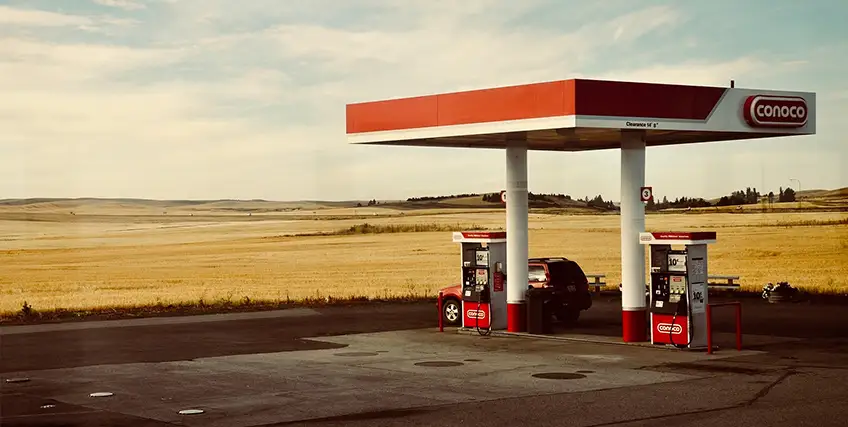How to Get Restaurant Financing in California
January 03, 2025 | Last Updated on: January 02, 2025

Opening a new restaurant can be a lifelong dream for some entrepreneurs. In fact, 8,694 new restaurants opened their doors in California in 2023 alone. But those who have tried launching an eatery—whether a restaurant, cafe, coffee house, or even a food truck—know that the startup costs can be a barrier to success if you don’t have the right financing.
In this article, we’ll provide an overview of restaurant financing in California, including common types of restaurant loans you can use to get your business up and running.
What Are the Startup Costs Associated with Opening a New Restaurant?
New restaurant startup costs can vary significantly, depending on your business model. For example:
- A dine-in restaurant may require more capital than a food truck or take-out only restaurant.
- An upscale restaurant will likely cost more than a fast food restaurant
- Purchasing commercial real estate may require more money upfront compared to renting or leasing a location. How much renovating will you need to do to make the restaurant your own?
- Starting your own restaurant may require less money upfront, but purchasing a franchise comes with brand recognition.
In total, startup costs can range from $95,000 to $2,000,000 or more, depending on the type of restaurant. A mom-and-pop taco stand or food truck in a small town will cost less, while a fine dining steakhouse in a large city will cost significantly more.
As you work on your business plan, it will help you determine the precise startup costs for your restaurant.
The following is a closer look at some of the expenses of opening a new restaurant.
Business License and Permits
You’ll need several business licenses and permits to open a restaurant. These will depend on the type of restaurant business you open and can potentially include a business license, Seller’s Permit, Certificate of Occupancy, liquor license, health permit, and more. Some will have a fee. Most are under $100 but plan up to $5,000 if you need a liquor license. Check with your local licensing and permits office to learn what’s required in the city you plan to operate your restaurant.
Commercial Space
Your restaurant facilities will be the biggest expense of owning a restaurant. Naturally, purchasing commercial space will cost more than leasing. If you buy, you’ll likely need a commercial real estate loan, requiring a down payment of 15% and 35%.
While buying has advantages, leasing your restaurant space is a viable option. The upfront cost will likely be less. You’ll typically need a security deposit, three to six months rent, and possibly have to renovate the space. Some landlords also require two or more years of commitment.
Rent prices on commercial spaces can vary significantly depending on the city, state, and location of the building. Areas off the beaten path might cost less but will be harder to find success. Prime locations will cost more but may offer a higher chance of success because of the increased traffic.
Renovations, Building Expenses, and Decor
When you open a restaurant, it should have a design that distinguishes it from other restaurants. Most restaurateurs aim to create an ambiance that keeps customers returning. Therefore, construction or renovations are certainly on the menu when opening a restaurant.
While this can be as simple as fresh paint, artwork, and new tables and chairs, there’s usually more to it than that. For example, there are health and safety codes you’ll have to meet, which can mean significant demolition and rebuilding of the interior of an existing building, or new construction if you’re building from scratch.
If you’re opening in a city with mild weather, you may have an outdoor patio with landscaping and flowers to set the mood. The more renovating you have to do, the more restaurant financing in California you’ll need. This can run anywhere from $5,000 to $100,000 or more.
Restaurant and Kitchen Equipment
You’ll need restaurant equipment to operate your venture. You may need a special kitchen buildout, which can be expensive. Commercial ovens, refrigerators, freezers, dishwashers, pots and pans, prep tables, service and bar equipment, and more all add up. But they’re essential to a fully operational restaurant. Plan on anywhere from $25,000 to $100,000 or more.
Restaurant POS System and Other Technologies
Everything in the modern era is becoming automated and centralized with innovative technologies. The restaurant industry is no exception.
Technology systems enable restaurants to process credit cards, manage reservations, automate check-out processes, offer gift cards, maintain rewards programs, track sales and food inventory, and more. However, all of these systems come with expenses, usually monthly or annual fees.
Point-of-sale (POS) systems can cost $50 to $300 a month, while tableside payment devices cost up to $500 a device. Networked kitchen display systems can cost upwards of $1,500 and kiosks can run $8,000 or more upfront plus $20 a month or more for the software.
Factoring in other technology expenses, you might expect to need $10,000 to $30,000 to meet the needs of today’s restaurant consumers who want speed and convenience.
Hiring Expenses
Startup costs can also include the expenses associated with hiring employees during your first year of business. Factor in cooks, managers, and waitstaff, at the very least. Also, consider benefit options and whether or not you will provide them to your workers. And keep in mind that in California, even fast-food workers must get paid a minimum of $20 an hour.
Marketing Costs
One of the most overlooked startup costs in the restaurant industry is marketing. You need to get the word out so that people discover your restaurant and start spending money there. Developing a loyal customer base is critical for your restaurant’s success.
Restaurant marketing campaigns encompass several strategies, including email marketing, loyalty programs, social media advertising, geofencing, Google ads, and more.
Most restaurants end up investing 3 to 6% of their sales towards marketing.
Types of Restaurant Financing in California
Financing restaurants can be highly specialized and individualized based on your business needs. Small business owners today have more funding options than ever.
Here are some common options for restaurant financing in California:
- Working capital loans: A working capital loan can help cover many small business expenses, including inventory expenses for your restaurant’s menu items, payroll, and even your commercial lease during a slow season when your cash flow is limited.
- Equipment loans: Equipment financing can be used to purchase new equipment for your restaurant, such as stoves, ovens, refrigerators, freezers, point-of-sale systems, and even vehicles for food deliveries.
- SBA loans: SBA loans are partially guaranteed by the Small Business Administration and offer long-term financing for a variety of purposes, including real estate purchases, short and long-term cash flow, equipment, furnishings, and supplies.
- Term loans: A term loan can be used to expand your business, purchase equipment, and improve cash flow for your business operations. Loan funds from term loans are provided upfront as a lump sum of cash and repaid in equal monthly payments. Term loan repayment periods can be short-term or long-term, depending on the lender.
- Food truck financing in California: Funding a food truck may be easier than getting a restaurant loan. This is due to multiple reasons. First, food trucks qualify for more than one type of financing because they’re considered a vehicle and equipment. The food truck becomes collateral, making it easier for lenders to recover their losses if the loan goes south. Plus, food truck businesses sometimes have higher profit margins and success rates than restaurants.
There are other types of restaurant financing in California available, including credit cards, business lines of credit, and revenue-based financing.
Which type of restaurant loan is best?
The best restaurant loan option highly depends on your business needs. For example, some small business owners pay for startup costs like licensing, building lease, and restaurant decor. They might also put some expenses on personal credit cards and only get restaurant equipment financing for larger purchases.
Meanwhile, other restaurant owners may get a commercial real estate loan to pay for the purchase of their restaurant building. On the other hand, some entrepreneurs get SBA loans that cover everything.
Eligibility factors will also influence which restaurant loans in California you can get. It can be difficult to get a commercial bank loan if you have bad credit or credit score isn’t high. The loan application process for both traditional banks and SBA loans is also cumbersome and can take time. But if you can get approved, the interest rates and repayment terms can be decent.
Planning for Successful Restaurant Financing in California
Running a business is all about planning for success. This is especially the case for restaurants.
Here are some tips to utilize along the way:
- Develop a detailed business plan in the early stages of your restaurant planning.
- Identify your long and short-term goals.
- Get your financial statements in order, including your business bank account, balance sheets, cash flow statements, and tax returns.
- Identify your competitors and point out your differentiators.
- Decide on a business model and figure out everything you need to bring your restaurant to life.
- Comprehensively illustrate how you plan to use your restaurant loan funds.
- Make a list of tasks you need to complete for a successful restaurant opening.
- Manage your business finances after opening to pave the way for lower-cost restaurant loans in California in the future.
Final Thoughts
Starting your own restaurant is no easy task—especially in California. But having a clear plan of action and the right restaurant financing in California, you can be on your way to success. Just remember, you’re not the first one to go down this path. If you have questions, reach out to your lender, or join an entrepreneurship group to seek advice from other business owners.
FAQs
How hard is it to get a small business loan for restaurants in California?
It can be harder than other types of business loans, especially with traditional lenders. However, online lenders have more lenient lending criteria, making it easier to get a restaurant business loan.
Which type of restaurant financing in California is best for my new restaurant?
This varies depending on your needs. Look for restaurant financing in California that has low interest rates and favorable terms.
What type of credit score will I need to start a restaurant business?
Generally, the higher the better. However, online lenders are more likely to approve financing with mediocre credit scores than traditional banks are.
How long does it take to get approved for restaurant loans?
It can take upwards of three months for the underwriting process with a bank, credit union, or the SBA. However, an online lender can potentially deliver funding in a shorter time span compared to a bank.
What can I use my restaurant loan funds for?
It depends on the type of loan. Real estate and equipment loans have to be used for those purposes. However, term loans, business lines of credit, or revenue-based financing other alternate funding options are more flexible and can be used for many restaurants need.



